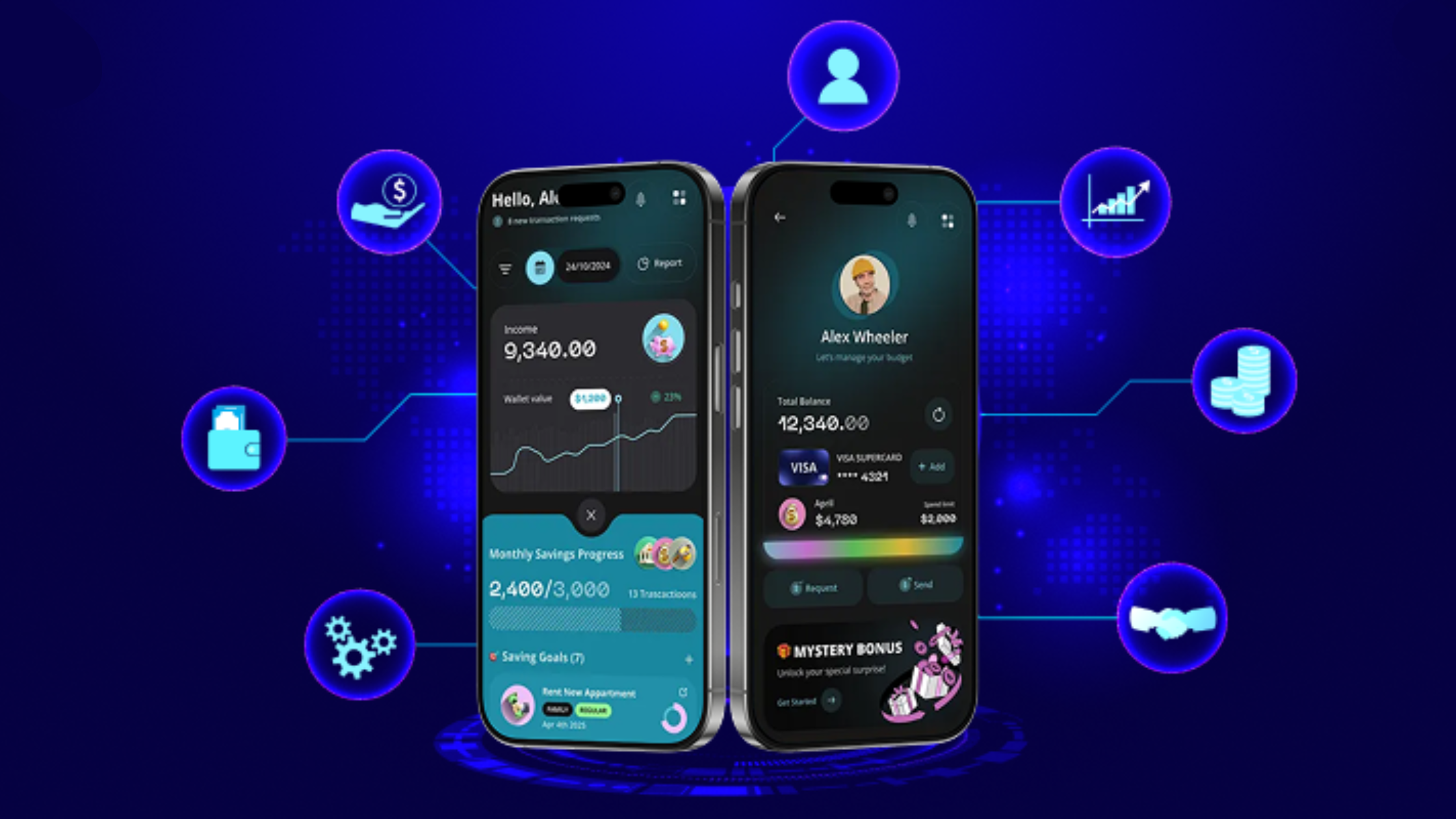The UX/UI design world is constantly evolving, with new trends and technologies always emerging. From voice-activated interfaces to virtual reality, designers have more tools than ever to create immersive and engaging user experiences. In this blog post, we’ll explore some of the key trends shaping the future of UX/UI design, and introduce you to nine of the top tools that designers can use to stay ahead of the curve. We’ll cover everything from prototyping and animation to color theory and interaction design, so whether you’re a seasoned designer or just starting out, you will find something valuable in this post.
The power of prototyping
Prototyping is a fundamental tool in the UX/UI designer’s arsenal, enabling the rapid testing of design concepts with users. This iterative process empowers designers to gather valuable feedback and make informed decisions, ensuring that their designs align with user needs and preferences. By identifying and addressing usability issues early in the design process, prototyping plays a crucial role in enhancing the overall user experience.
Beyond its user-centric advantages, prototyping also serves as a powerful communication tool. It allows designers to effectively convey their ideas to stakeholders, fostering a shared understanding of the product’s vision among team members. This alignment ensures that everyone is working towards a common goal, minimizing miscommunication and ensuring a cohesive design process.
Prototyping accelerates the design process, allowing designers to iterate on their designs quickly and efficiently. This agility enables designers to explore multiple design solutions and identify the most effective approach. With prototyping, designers can visualize and test their ideas, making informed decisions based on real-world feedback rather than assumptions.
In summary, prototyping empowers designers to create user-centric designs, communicate their ideas effectively, and accelerate the design process. By leveraging this powerful tool, designers can deliver exceptional user experiences that meet the needs and expectations of their users.
Animations and microinteractions
Are essential elements of modern user interfaces. They can enhance the user experience by drawing attention to important elements, providing feedback, and making interactions more enjoyable.
Animations can be used to guide users through a task, highlight changes in the interface, or simply add a touch of visual interest. When used effectively, animations can make the user interface feel more responsive and engaging. Microinteractions are small, animated interactions that provide feedback to the user. For example, a button might change color when it is hovered over, or a progress bar might appear when a task is loading. Microinteractions can help users understand how the interface works and make them feel more in control.
It is important to use animations and microinteractions sparingly and only when they add value to the user experience. Overusing animations can be distracting and make the interface feel cluttered. Microinteractions should be subtle and relevant to the user’s task. They should not interrupt the user’s flow or draw attention away from the main content.
To ensure that animations and microinteractions are effective, it is important to test them with users. This can be done through usability testing or by simply asking users for their feedback. Testing will help you identify any issues with the animations or microinteractions and make sure that they are working as intended.
Animations and microinteractions are constantly evolving, and new techniques are emerging all the time. To stay up-to-date on the latest trends, it is important to follow design blogs and attend design conferences. By staying informed about the latest developments, you can use animations and microinteractions to create a modern and engaging user experience.
The Psychology of Color: Color Theory for User Interfaces
In the realm of UX/UI design, colors hold a profound power that extends beyond aesthetics. They have the remarkable ability to influence user behavior, emotions, and even decision-making processes. Understanding the psychology of color is paramount for creating user interfaces that resonate with users and provide exceptional experiences.
Color theory, the science behind the use of colors, provides designers with a framework for harnessing this power effectively. By comprehending the emotional responses associated with different colors and their impact on perception, designers can craft user interfaces that evoke specific moods and guide users toward desired actions.
For instance, warm colors such as red, orange, and yellow tend to exude energy, excitement, and warmth. They can stimulate users’ attention and create a sense of urgency. On the other hand, cool colors like blue, green, and purple are often associated with serenity, calmness, and trust. They can instill a sense of security and reliability. By strategically employing these colors, designers can subtly influence user behavior and enhance overall user satisfaction.
Keeping users engaged: interaction design
At the core of UX/UI design lies a fundamental principle: user-centered design. This approach places the user at the forefront of the design process, ensuring that the products and services we create align seamlessly with their needs and desires. Interactive elements serve as catalysts, transforming static interfaces into dynamic experiences that captivate users.
Responsive design is another cornerstone of user engagement. In an era of diverse devices and screen sizes, it’s imperative to ensure that users enjoy a consistent and seamless experience across all platforms. By embracing responsive design principles, we can adapt our designs to different resolutions and orientations, providing users with an optimal viewing experience regardless of their device of choice.
Accessibility and inclusivity are not mere buzzwords; they are essential considerations for any responsible designer. By incorporating accessibility features into our designs, we can ensure that users of all abilities can access and interact with our products. This not only enhances the user experience but also broadens the reach of our designs, catering to a wider audience and fostering a more inclusive digital landscape.
When we adhere to these principles, we transcend mere aesthetics and create user interfaces that are not only visually pleasing but also highly functional and user-friendly. By placing the user at the center of our design decisions, we craft digital experiences that engage, empower, and delight users, leaving them with a lasting impression of our products and services.
The future of UX/UI design
The realm of UX/UI design is poised for a transformative journey as we delve into the year 2024. The industry is brimming with anticipation as groundbreaking technologies and evolving trends converge, promising a future that redefines the way we interact with digital products and services.
Voice and gesture controls are emerging as game-changing forces in the design landscape. These intuitive interfaces allow users to interact with devices in a natural and effortless manner, mirroring real-world interactions. This paradigm shift opens up a world of possibilities for creating user experiences that feel seamless and intuitive.
Virtual and augmented reality, once confined to the realm of science fiction, are now poised to revolutionize the way we perceive and engage with digital content. These immersive technologies transport users into virtual worlds, blurring the boundaries between the digital and physical realms. Imagine exploring a product in 3D or experiencing a virtual tour of a new home – these are just glimpses of the transformative potential that VR and AR hold.
Artificial intelligence (AI) and machine learning (ML) are rapidly transforming the design landscape. These technologies empower designers with data-driven insights, enabling them to create user experiences tailored to individual preferences and behaviors. AI-powered tools automate repetitive tasks, allowing designers to focus on the creative aspects of their work.
The Internet of Things (IoT) is connecting devices and objects in unprecedented ways, creating a vast network of interconnected devices. This interconnected ecosystem presents designers with the challenge and opportunity to create cohesive experiences across multiple touchpoints, ensuring seamless transitions between devices and platforms.
By embracing these emerging technologies and trends, UX/UI designers can create products and services that are not only visually appealing but also highly intuitive, engaging, and tailored to the evolving needs of users. The future of UX/UI design is bright, and designers who stay ahead of the curve will be at the forefront of shaping the next generation of digital experiences.







